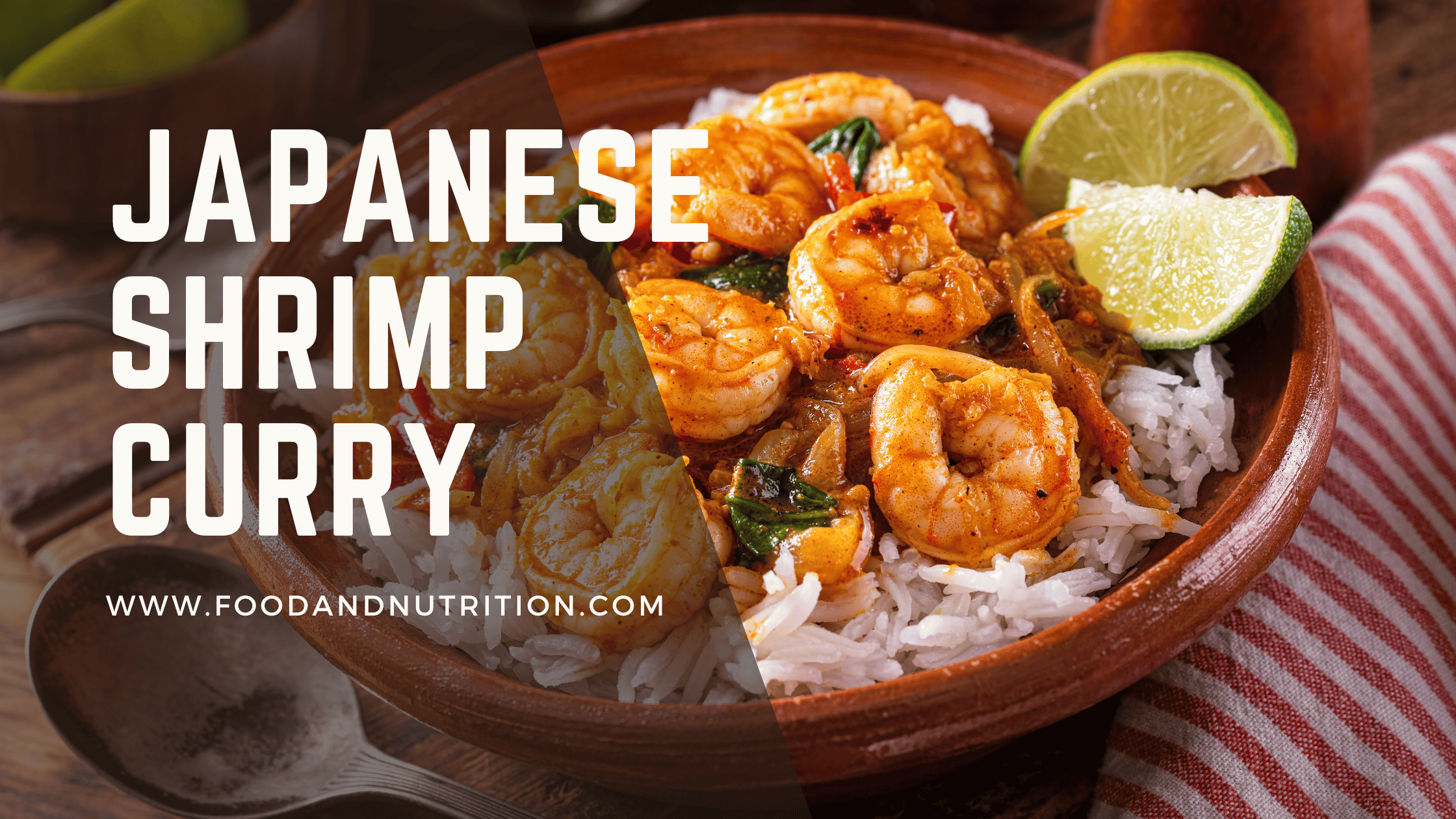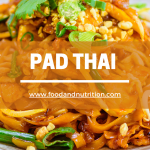Japanese Shrimp Curry: A Scrumptious Seafood Delight with a Rich Culinary Heritage

Indulging in the world of Japanese cuisine is like embarking on a captivating adventure filled with delicate flavors, harmonious combinations, and diverse dishes. Among the multitude of culinary treasures, Japanese Shrimp Curry reigns supreme as a beloved favorite. Prepare to be transported into the rich history, mesmerizing popularity, and undeniable appeal of this delectable dish that has captured the hearts and taste buds of food lovers worldwide.
History: A Fusion of Cultures
The origins of Japanese curry can be traced back to the late 19th century when it was introduced to Japan by the British. Over time, this foreign influence was adapted and transformed into a uniquely Japanese culinary delight. The integration of traditional Japanese seasonings and ingredients led to the birth of Japanese curry as we know it today – a flavorful fusion of cultures that combines the best of both worlds.
Popularization: A Love Affair with Seafood
Among the variations of Japanese curry, Shrimp Curry emerged as a delightful representation of Japan’s adoration for seafood. Seafood holds a special place in Japanese cuisine, celebrated for its freshness, delicate flavors, and health benefits. The combination of succulent shrimp, aromatic spices, and savory curry base creates an irresistible balance of taste and nutrition that has captivated the palates of countless curry enthusiasts.

Common Ingredients: Symphony of Flavors
At the heart of Japanese Shrimp Curry lies a harmonious blend of ingredients that work in perfect synergy to create a symphony of flavors. The star of the dish is undoubtedly the plump and juicy shrimp. Joining forces with this exquisite seafood are a medley of vegetables such as onions, carrots, and potatoes, providing texture and depth to the curry. The curry powder, tomato paste, soy sauce, and honey contribute to the distinctive taste profile, offering a delightful fusion of sweet, savory, and subtly spicy notes. Lastly, the addition of chicken or vegetable broth creates a rich and luscious base that enhances the overall appeal of this culinary masterpiece.
JAPANESE SHRIMP CURRY
Ingredients
- 1 tablespoon vegetable oil
- 1 onion chopped
- 2 carrots peeled and chopped
- 2 potatoes peeled and chopped
- 1 tablespoon curry powder
- 1 tablespoon tomato paste
- 2 cups chicken or vegetable broth
- 1 cup water
- 1 tablespoon soy sauce
- 1 tablespoon honey
- 1 pound shrimp peeled and deveined
- Salt and pepper to taste
- Cooked rice for serving
Instructions
- Heat vegetable oil in a large pot over medium heat.
- Add the chopped onion and cook until softened, approximately 5 minutes.
- Stir in the chopped carrots and potatoes, and cook for another 5 minutes.
- Sprinkle curry powder and tomato paste over the vegetables. Cook while stirring constantly for 1-2 minutes.
- Pour in chicken or vegetable broth, water, soy sauce, and honey. Bring the mixture to a boil, then reduce the heat to low and let it simmer for 20-25 minutes until the vegetables are tender.
- Add the peeled and deveined shrimp to the pot and cook for an additional 5 minutes or until the shrimp are fully cooked.
- Season the curry with salt and pepper according to your taste preferences.
- Serve the Japanese Shrimp Curry over cooked rice.
Notes
– Feel free to customize the vegetables in the curry to suit your liking and dietary preferences. Enjoy the flavorsome experience!
Nutrition: A Wholesome Delight
Japanese Shrimp Curry not only tantalizes the taste buds but also offers numerous nutritional benefits. Shrimp, the star ingredient, is an excellent source of lean protein, making it an ideal alternative to red meat. It is also packed with essential minerals like selenium, iodine, and zinc, which promote optimal thyroid function and support a healthy immune system. The accompanying vegetables, such as carrots and potatoes, provide fiber, vitamins, and antioxidants, elevating the nutritional value of the dish. Additionally, the spices used, like curry powder, possess anti-inflammatory and antioxidant properties that contribute to overall well-being. By savoring Japanese Shrimp Curry, you nourish your body while treating your taste buds to a satisfying and healthful experience.

Serving Ideas: Endless Culinary Explorations
When it comes to serving Japanese Shrimp Curry, the possibilities are as vast as the imagination. Traditionally, it is served over a bed of fluffy white rice, allowing the curry to mingle with the grains, creating a harmonious blend of flavors. For those seeking healthier alternatives, consider substituting white rice with nutrient-rich brown rice or cauliflower rice. The vibrant colors and enticing aroma of the curry also make it an ideal accompaniment to steamed vegetables or a refreshing side salad. Don’t hesitate to unleash your creativity by experimenting with different toppings such as crispy fried shallots, fresh cilantro, or a dollop of tangy yogurt. These additions enhance both the visual appeal and taste, elevating your dining experience to new heights.
Chef Tips: Perfecting Your Japanese Shrimp Curry
- Opt for the freshest shrimp possible to enhance the overall taste and texture of the dish. If fresh shrimp is not available, opt for high-quality frozen shrimp.
- Experiment with different vegetable combinations to cater to your personal preferences and dietary needs. Consider adding bell peppers, peas, or even edamame for added flavor and nutrition.
- Adjust the level of spiciness by adding more or less curry powder according to your taste buds’ preference. For those who enjoy heat, a touch of cayenne pepper or red pepper flakes can be added for an extra kick.
- Allow the flavors to meld together by simmering the curry on low heat for an extended period. This helps develop a deeper, more complex flavor profile.
- Garnish your Japanese Shrimp Curry with a squeeze of fresh lemon juice or a sprinkle of chopped scallions to add a burst of freshness just before serving.

In Conclusion
Japanese Shrimp Curry is a testament to the beauty and adaptability of Japanese cuisine. Its captivating history, widespread popularity, flavorful ingredients, and nutritional benefits make it a dish that ignites passion among food lovers worldwide. By indulging in the symphony of flavors, textures, and aromas of Japanese Shrimp Curry, you embark on a culinary journey that is as nourishing as it is enticing. So, seize the opportunity to tantalize your taste buds and create memories that will last a lifetime with each delectable bite.
- Embracing Summer: The Ultimate Watermelon Feta Salad with Tomatoes & Olives
- Rediscovering Lebanese Salad: A Refreshing Delight with a Rich Heritage
- Eating Your Way to Healthy Blood Pressure: A Guide to Lowering Hypertension
- Perfect Roasted Leg of Lamb: A Timeless Delight for Your Table
- Romesco Sauce: A Flavorful Spanish Delight That Elevates Every Dish
- Master Cooking with Salt: A Guide to Types & Uses – Elevate Meals
